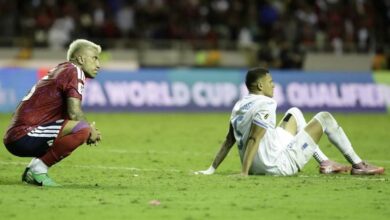Chilean Football Dreams Crumble Under Weight of Financial and Sporting Flaws

Chile’s top football clubs just crashed out of the Copa Libertadores, shattering hopes for a long-awaited revival. The failure exposes a more profound crisis—shrinking budgets, vanishing idols, and a national team on life support—threatening Chile’s entire footballing identity.
A Continental Exit Heard Round the Andes
Ninety minutes. That was all Universidad de Chile needed against Botafogo to reach the Libertadores’ last sixteen and declare the long night of Chilean club football over. Instead, under the floodlights of a raucous Maracanã, the U wilted. A mis-trapped pass here, a tired sprint there, and suddenly, a campaign that had begun with loud claims of “this is our year” was reduced to teary apologies. Ten points—usually enough to sneak through—were gutted by an earlier draw with Venezuelan minnows Carabobo, a single blemish now etched like a scar. Coach Gustavo Álvarez tried to frame the exit as growing pains, not failure, yet even his players looked unconvinced.
Their collapse would have stung less had fellow giants fared better. Colo Colo, once the continent’s fear for its 1991 title run, bowed out so quietly that opposing defenders barely needed to swap shirts for souvenirs. Younger clubs—Deportes Iquique, Ñublense—never even survived the preliminary rounds. Across Santiago, televisions showed Brazilian and Argentine celebrations while Chilean fans clicked remotes in sullen disbelief. The promised “brighter era” had turned pitch-black in one brutal fortnight.
A League Drowning in Its Own Shallow Pockets
Follow the thread backward, and the defeats will start long before kickoff. In Chile’s Primera División, stadiums echo with empty seats, and balance sheets bleed ink. Sponsors negotiate one-year deals; presidents pray for a lucrative player sale each winter to make payroll. A 2021 sports economics report laid the math bare: television revenue for the entire Chilean league equals what a mid-table Brazilian side collects. Youth academies operate on donated cones and volunteer trainers, while rivals in Buenos Aires and São Paulo unveil €10 million training centers.
The result is a brutal talent drain. Promising teenagers bolt to Argentina’s Talleres or Uruguay’s Nacional before they can sign senior contracts at home. Sensing stagnant wages, veterans chase mid-tier Major League Soccer money rather than finish their careers in Santiago. Those who stay often endure delayed paychecks and crumbling physiotherapy rooms. When continental fixtures arrive, Chilean squads face opponents running on higher salaries, deeper benches, and months of high-tempo domestic play. Tactics can bridge gaps for a match or two; the disparity becomes a canyon over six group-stage games.
Administrators acknowledge the rot yet keep rearranging deck chairs—coaching changes, one-off fan campaigns, and occasional “modernization” task forces that dissolve after publishing glossy PDFs. Meanwhile, the Copa Sudamericana tells the same story: Palestino clings to life in a playoff round, Universidad de Chile prays for a favorable draw, and Unión Española vanishes before the knockout lights flicker on. Unless a miracle run materializes, Chile will watch both continental tournaments conclude without a single tricolor flag—a first in decades and a gut punch to national pride.
La Roja Caught in the Undertow
Club woes bleed into the national team like ink through damp paper. The golden generation—Sánchez, Vidal, Bravo—delivered back-to-back Copa América titles and then aged faster than replacements could emerge. Today, La Roja sits last in World Cup qualifying, with ten meager points and a gauntlet of Brazil, Uruguay, and Argentina. Coaches rotate; systems shuffle, yet the scoreboard refuses mercy.
Why the drought? Because the same academy halls that produce Colo Colo’s thin benches also feed the national pipeline. Kids who once dreamed of wearing the No. 8 for Chile now idolize Premier League highlights and see emigration, not domestic heroism, as the surest route out of poverty. And because the federation that should invest in futures is busy firefighting present scandals—contract disputes, television-rights litigation, even parliamentary inquests into missing development funds.
In such chaos, the margin for hope shrivels. If Chile fails to reach 2026, it will miss three consecutive World Cups—an absence unknown since the tournament’s early years. Sponsors will flee, youth participation will dip, and the Primera División could shrink into regional irrelevance. Argentine and Brazilian media already frame Chile as a cautionary tale: a once-fearsome foe reduced to plucky underdog status.
Yet football nations have clawed back from worse. Japan built from ashes after 1994, the USA rebooted youth systems after 2018, and Colombia rebounded from a murderous nadir in the 1990s to dance again on the global stage. Chile, too, owns the blueprint for the resurgence: passionate supporter culture, a diaspora of European-based coaches willing to help, and a government newly intrigued by sport’s diplomatic power after hosting the 2023 Pan American Games.
What is lacking is a catalyst bold enough to overhaul governance—centralize broadcasting, mandate academy funding, empower clubs to resist short-term transfers—and a generation fearless enough to shoulder rebuilding pains. For now, the nation sits in limbo, scanning scoreboards for an unlikely upset, dreading the following headline: another Chilean exit.
Also Read: Honduran Powerhouse Olimpia Soars with Triumphant Final Glory
The Copa Libertadores closed its doors on Chile this season, but its echo reverberates beyond any tournament. It tolls for empty stadium coffers, broken youth pathways, and a federation stuck in yesterday’s playbook. Until those more profound chords change, heartbreak on the continental stage will keep replaying like a sad refrain. Chilean football can treat this season as a final warning—or accept a future spent watching others lift the trophies it once believed were within reach.




